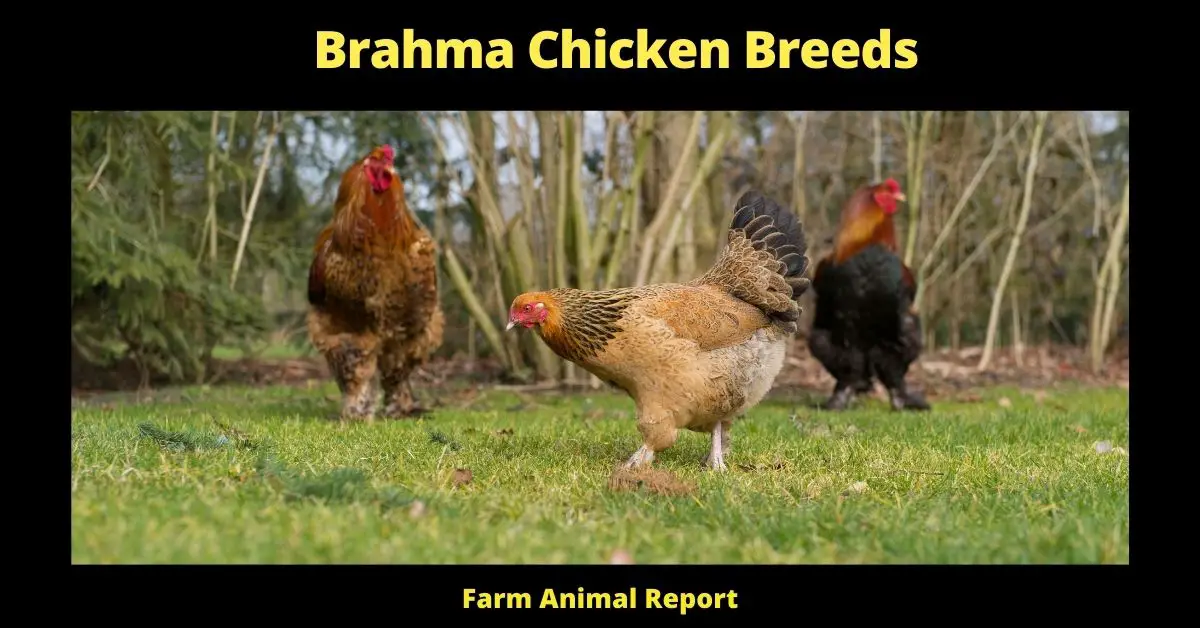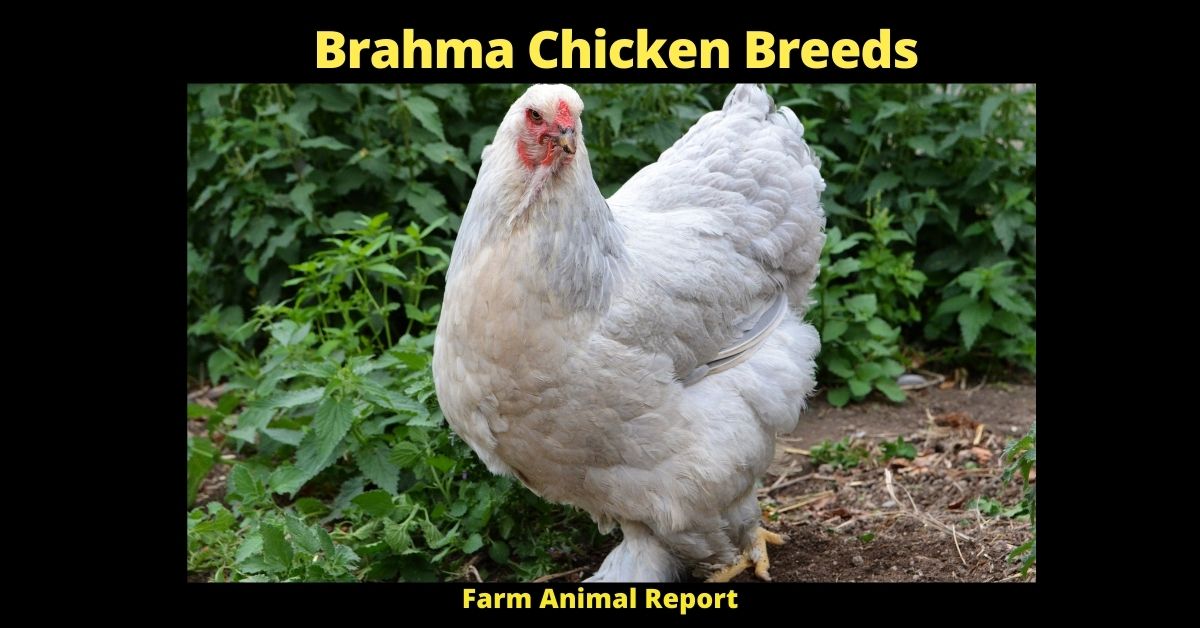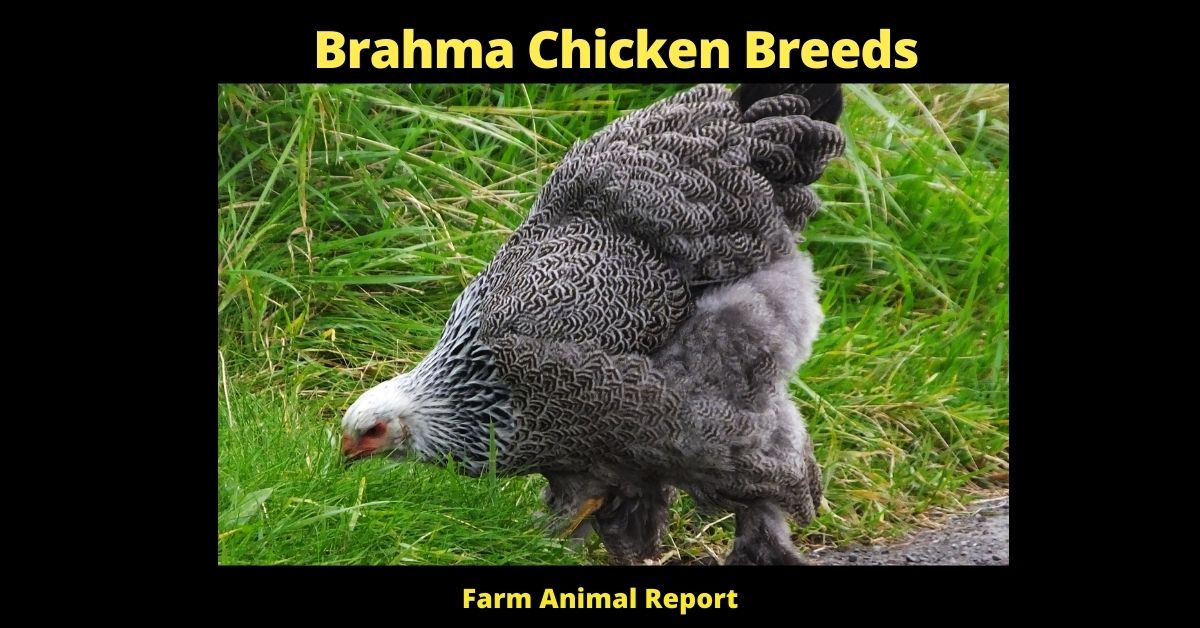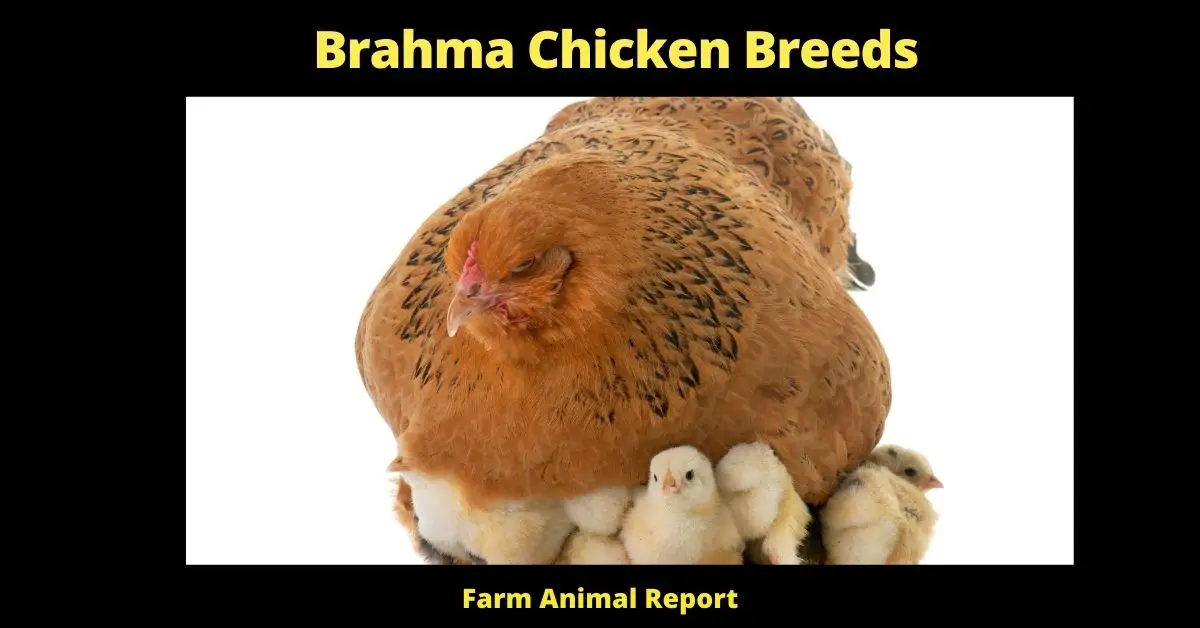Brahma Chicken Colors
Brahma Chicken Colors – There are many different chicken breeds out there, Brahma chickens being one of them. Brahma chickens are a large breed that is known for their docile temperament and impressive size.
They are a popular choice for those looking for a backyard chicken that is easy to care for and won’t scare the kids! In this blog post, we will discuss the Brahma chicken breed in more detail, including information on their history, physical characteristics, and how to care for them. Brahma Chicken Colors
History of Brahma Chicken Breeds
The History of Brahma Chickens is a long and varied one, with the breed having been developed in several countries over the course of many years. The Brahma chicken is thought to have originated in Asia, specifically in China or India, and was then brought to the United States in the mid-19th century.
The Brahma was first introduced into England in 1852, where it was known as the “Shanghai” chicken. It wasn’t until 1879 that the Brahma was officially recognized as a distinct breed by the poultry fancy in America.
See Amazons Resources on The Many Breeds of Chickens and Their Characteristics
The name “Brahma” is thought to come from either the city of Brahmaputra in India or from the Hindu god Brahma. However, there is no definitive answer as to where the name truly originated. What is known is that the Brahma quickly became one of the most popular chicken breeds in America, due in part to its large size. Brahmas are sometimes referred to as “large fowls” or “king of chickens”, and can weigh up to 18 pounds (eight kilograms). Jump to 12 Ways to Make Money by Chicken Farming **CHARTS**
Brahma chickens are known for being calm and docile, making them excellent pets. They are also very social creatures and enjoy being around other chickens. However, they can be somewhat aggressive when it comes to establishing the pecking order among a flock. This aggression is usually only displayed towards other chickens and not towards humans.
- Queen victoria – First introduced into England in 1852
- King of chickens – large size
- Heritage breed – popular in America
- Large chickens / large fowls – can weigh up to 18 pounds
- Pecking order – aggression towards other chickens to establish dominance among the flock. Not aggressive towards humans.
- Where did the name Brahma Come From? the city of Brahmaputra in India or from the Hindu god Brahma.

3 Main Types of Brahma Chickens – Brahma Chicken Eggs
There are three main types of Brahma chickens: the Buff Brahma, the Light Brahma, and the Dark Brahma.
Buff Brahma
The Buff Brahma is the most common type of Brahma chicken. They are easily recognizable by their large size and buff-colored feathers. Buff Brahmas are friendly birds that make great pets.
Light Brahma
The Light Brahma is slightly smaller than the Buff Brahma and has white feathers instead of buff-colored feathers. Like the Buff Brahma, they are gentle birds that make good pets.
Dark Brahma
The Dark Brahma is the largest type of Brahma chicken. They have black feathers and can weigh up to 18 pounds (eight kilograms). Dark Brahmas are not as common as the other two types of Brahmas. They can be aggressive and are not recommended as pets.
Gray Shanghaes
The Gray Shanghaes is a variation of the Dark Brahma. They have gray feathers instead of black feathers and are not as common as the other two types of Brahmas.
Black Star
The Black Star is a variation of the Buff Brahma. They have black feathers with white star-shaped markings on their heads. They are not as common as the other two types of Brahmas.
Black Striping
The Black Striping is a variation of the Dark Brahma. They have black feathers with white striping on their heads. They are not as common as the other two types of Brahmas.
Gray shanghaes, black stars, and black striping are also types of Brahma chickens, but they are not as common as the three main types. Gray shanghaes have gray feathers, black stars have black feathers with white spots, and black striping has black feathers with white stripes. These three types of Brahmas are not recommended as pets due to their aggressive nature.
Characteristics of Brahma Chickens
Some of the most important characteristics of Brahma chickens include their size, egg-laying abilities, and meat production. These birds are often considered gentle giants and can weigh up to 12 pounds.
- Gentle giants – Brahma chickens are some of the gentlest giants in the chicken world. They are great for families with small children because they are so docile and don’t mind being handled.
- Large size – Brahma chickens are one of the largest breeds available, often weighing up to 12 pounds. This makes them a good choice for those who want a bird that will provide plenty of meat or eggs.
- Good egg layers – Brahma hens are some of the best egg layers around, typically laying between 200 and 300 eggs per year.
- Meat production – As mentioned before, Brahma chickens are excellent choices for those who want quality meat as well as eggs. These birds produce about two pounds of meat each.
- Pea comb – the comb on a Brahma chicken is shaped like a pea, as opposed to the more common Hen’s Comb.
- Feathered legs – Unlike many other breeds of chickens, Brahma chickens have feathered legs. This means that their lower legs are covered in feathers all the way down to their feet.
- Different colors – Brahmas can be found in several different colors, including white, black, buff, and barred.
- Thick feathering – Brahmas have very thick plumage, which helps keep them warm in cold climates.
- Heavy body – Another characteristic that makes Brahmas well-suited for colder climates is their heavy bodyweight. A Brahma chicken can easily withstand temperatures below freezing without getting sick
- Large size / large birds – Brahma chickens are some of the largest breeds available, often weighing up to 12 pounds. This makes them a good choice for those who want a bird that will provide plenty of meat or eggs.
- Good egg layers – Brahma hens are some of the best egg layers around, typically laying between 200 and 300 eggs per year.
- Meat production – As mentioned before, Brahma chickens are excellent choices for those who want quality meat as well as eggs. These birds produce about two pounds of meat each.
- Square feet – Brahmas have very large feet, which helps them maintain their balance when walking on slippery or uneven surfaces.
- White feathers – One of the most distinguishing features of Brahmas is their white feathers.
- Small wattle – Brahmas have a small fleshy protuberance on the front of their neck called a wattle.
- Docile birds – Brahmas are some of the most docile chicken breeds available and don’t mind being handled by humans.
- Small children – They are also great for families with small children because they are so docile and don’t mind being handled.
- Northern climates – Brahmas are well-suited for cold weather climates and can withstand temperatures below freezing without getting sick.
- Cold weather – Their thick feathering helps keep them warm in cold weather.
- Cold climates – / Temperature – Brahmas are well-suited for cold weather climates and can withstand temperatures below freezing without getting sick. They do best in areas that have cool to moderate temperatures.
- Brown color – Another distinguishing feature of Brahmas is their brown coloring.
- Excellent choice – Brahma chickens make excellent choices for those who want a reliable egg layer and good meat producer.
- Good mothers – Brahma hens are also known for being good mothers, often incubating their eggs and keeping the chicks warm until they are able to fend for themselves.
- Brown eggs – Brahmas lay brown eggs, which some people prefer over white eggs.
- Friendly birds – Lastly, Brahmas are known for being friendly birds that enjoy interacting with people.
- Hardy chickens – Lastly, Brahmas are hardy chickens and can withstand a variety of different conditions.
- Prominent eyes – One last characteristic that is worth mentioning is their large, protruding eyes. This helps them see well in low-light conditions.
- Profuse feathering – Lastly, Brahmas have a lot of feathers, which keep them warm in cold weather climates.
- Large head – Their large heads also help them identify predators and other dangers from a distance.

Lifecycle of Brahma Chicken
The Complete Lifecycle of the Brahma Chickens is:
- Eggs – they will hatch in 21 days.
- Chicks / Brahma chicks – they will have their full feathers in about six weeks.
- Fully Feathers – at this point, they will begin to lay eggs.
- Broilers – Brahmas are typically used for meat production and will be ready for slaughter at around 12 weeks old.
- Lifespan – with proper care, Brahma chickens can live up to 15 years old.
- Brahma hens – these are the females of the species and are known for being good egg-layers.
- Brahma roosters – these are the males of the species and are typically used for meat production. they can weigh up to 12 pounds.
- Brahma hens and roosters live between eight and ten years. Brahmas reach full maturity at around six months of age. At this point, they will begin to lay eggs and can be used for meat production if desired.
- Brahmas are hardy chickens and can withstand a variety of different conditions. They do best in areas that have cool to moderate temperatures. One last characteristic that is worth mentioning is their large, protruding eyes. This helps them see well in low-light conditions.
- All in all, Brahmas make excellent choices for those who want a reliable egg layer and a good meat producer. They are also known for being good mothers, often incubating their eggs and keeping the chicks warm until they are able to fend for themselves. Lastly, Brahmas are hardy chickens and can withstand a variety of different conditions. This makes them a great choice for those living in cold weather climates.
- Brahma hens and roosters live between eight and ten years. They reach full maturity at around six months of age. At this point, they will begin to lay eggs and can be used for meat production if desired.
How are Brahma Chickens are Raised
They are easily Raised by all chicken farming methods.
- Homesteading – You can let them free range your backyard or keep them in a chicken tractor to protect your plants.
- Free Range – You can purchase land for them to live on and forage.
- Battery – You can keep them in a small space, but they will need more care.
- Large Coops – You can build or buy a large coop for them to live in.
- Moderate-sized family – You can keep them in your yard, but you will need to provide more food and water.
What are the Largest Chickens Breeds?
The Largest Chicken Breeds for Meat Production are:
- Cochin chickens – They can weigh up to 18 pounds (or more!)
- Gold partridge – These guys are big too, and can get up to 16 pounds.
- So there you have it, the biggest chicken breeds around! If you’re looking for a bird that will give you lots of meat, these are the ones you want. Do you have any experience with raising large chickens? Let us know in the comments below!
- Dorking chickens – The Dorking chicken is a breed that originated in England. They are considered to be one of the oldest English breeds, and they were originally bred for meat production. These chickens can get up to 12 pounds, making them a great choice for those looking for a larger bird.
- New Hampshire chickens – The New Hampshire chicken is another breed that was originally bred for meat production. They are known for their large size and hearty appetite, and they can weigh up to 11 pounds.
- Orpingtons – Orpingtons are a British breed of chicken that was developed in the late 19th century. They were originally bred as a dual-purpose bird, meaning they were good for both meat and egg production. These chickens can get up to 11 pounds, making them a great choice for those looking for a larger bird.
- Sussex chickens – The Sussex chicken is a British breed that was developed in the early 20th century. They were originally bred as a dual-purpose bird, meaning they were good for both meat and egg production. These chickens can get up to 11 pounds, making them a great choice for those looking for a larger bird.
- Rhode Island Red chickens – The Rhode Island Red chicken is a breed that was developed in the United States. They are known for their production of large, brown eggs, and they can weigh up to 11 pounds.
- Plymouth Rock chickens – The Plymouth Rock chicken is a breed that was developed in the United States. They are known for their production of large, brown eggs, and they can weigh up to 11 pounds.
- Barred Rocks chickens – The Barred Rock chicken is a breed that was developed in the United States. They are known for their production of large, brown eggs, and they can weigh up to 11 pounds.
- So there you have it, some of the largest chicken breeds around! If you’re looking for a bird that
- There are many different chicken breeds out there, each with their own unique characteristics. Some are better for egg production, while others are better at producing meat. If you’re looking for a large breed of chicken to raise for meat, the following breeds are some of the best options available. Keep in mind that these birds can get quite large – up to 18 pounds or more! So if you have limited space, they may not be the right choice for you
What are Brahma Chicken Breed Health issues
Hen Fever
Some of the major Brahms Chicken Health issues are Hen Fever and Mud Balls. Hen fever is a viral infection that can cause death in young chicks. Symptoms include loss of appetite, diarrhea, and swelling around the head. There is no cure for hen fever, so infected birds must be culled and disposed of properly to prevent the disease from spreading.
Mud Balls
Mud balls are another common health issue in Brahmas. They form when the chicken eats wet or dirty food and then tries to clean itself by swallowing a clay-like substance called gizzard stones. The stones can build up in the chicken’s crop and cause an obstruction that prevents the bird from eating or drinking. If left untreated, mud balls can lead to death. Treatment involves surgically removing the stones from the chicken’s crop.
Both hen fever and mud balls are serious health issues that can be deadly if not treated properly. It is important to be aware of these conditions and take steps to prevent them from occurring in your flock. Thanks for reading! I hope this was helpful!

For More Information on Brahma Chicken Breeds
- Brahma Chicken Breed Associations:
- The American Poultry Association (APA) is a nonprofit organization that was founded in 1873. It is the oldest national poultry organization in the United States and is dedicated to promoting and preserving the art of backyard poultry keeping. The APA recognizes more than 60 breeds of chickens, including Brahmas.
- The Livestock Conservancy is a nonprofit organization that works to conserve rare and endangered livestock and poultry breeds. They have a detailed database of all the major Brahma chicken breeds, as well as information on their history, characteristics, and breeding programs.
- Poultry associations are a great source of information on specific chicken breeds. There are several national organizations that recognize Brahmas, including the American Poultry Association, the British Poultry Council, and the Entente Européenne d’Aviculture et de Cuniculture (European Union of Poultry Keepers). Each association has its own set of standards for Brahma chickens and often holds poultry shows where you can see these birds competing against each other.
- English breeders are some of the most experienced in the world when it comes to Brahmas. If you’re interested in finding out more about this breed or want to buy some eggs or chicks, then I recommend contacting an English breeder. There are several good ones listed on the Livestock Conservancy website.
- Backyard chicken keepers are a great resource for information on keeping Brahmas. There are lots of websites, forums, and videos devoted to this topic.
Final Thoughts – Brahma Chicken Breeds; Colors, Eggs, Lifespan
In conclusion, Brahmas are a large breed of chicken that comes in a variety of colors. They are good layers of brown eggs and have a lifespan of around eight years. Brahmas are hardy birds but can be susceptible to health problems such as hen fever and mud balls. If you’re thinking about keeping this breed, then I recommend doing some research and finding an association or breeder that meets your needs. Thanks for reading!





